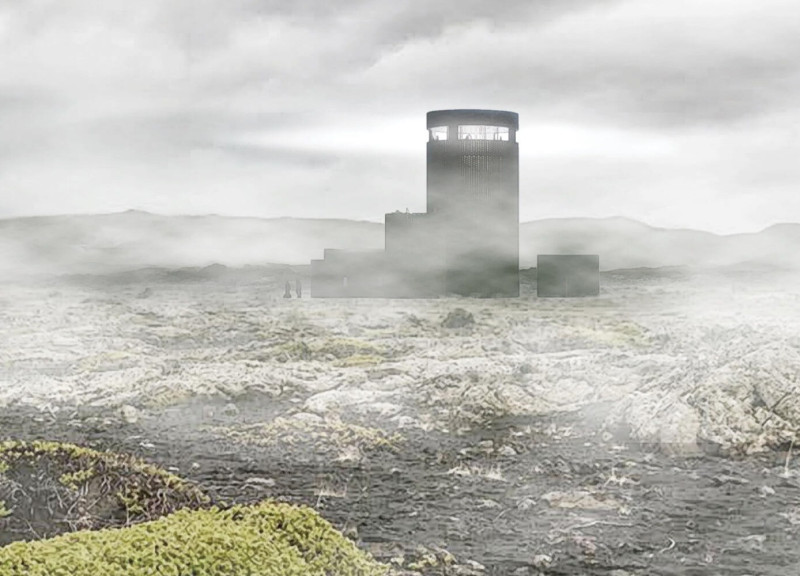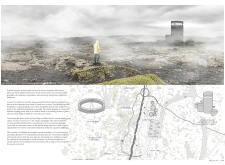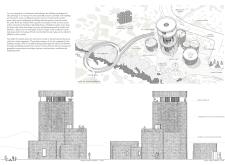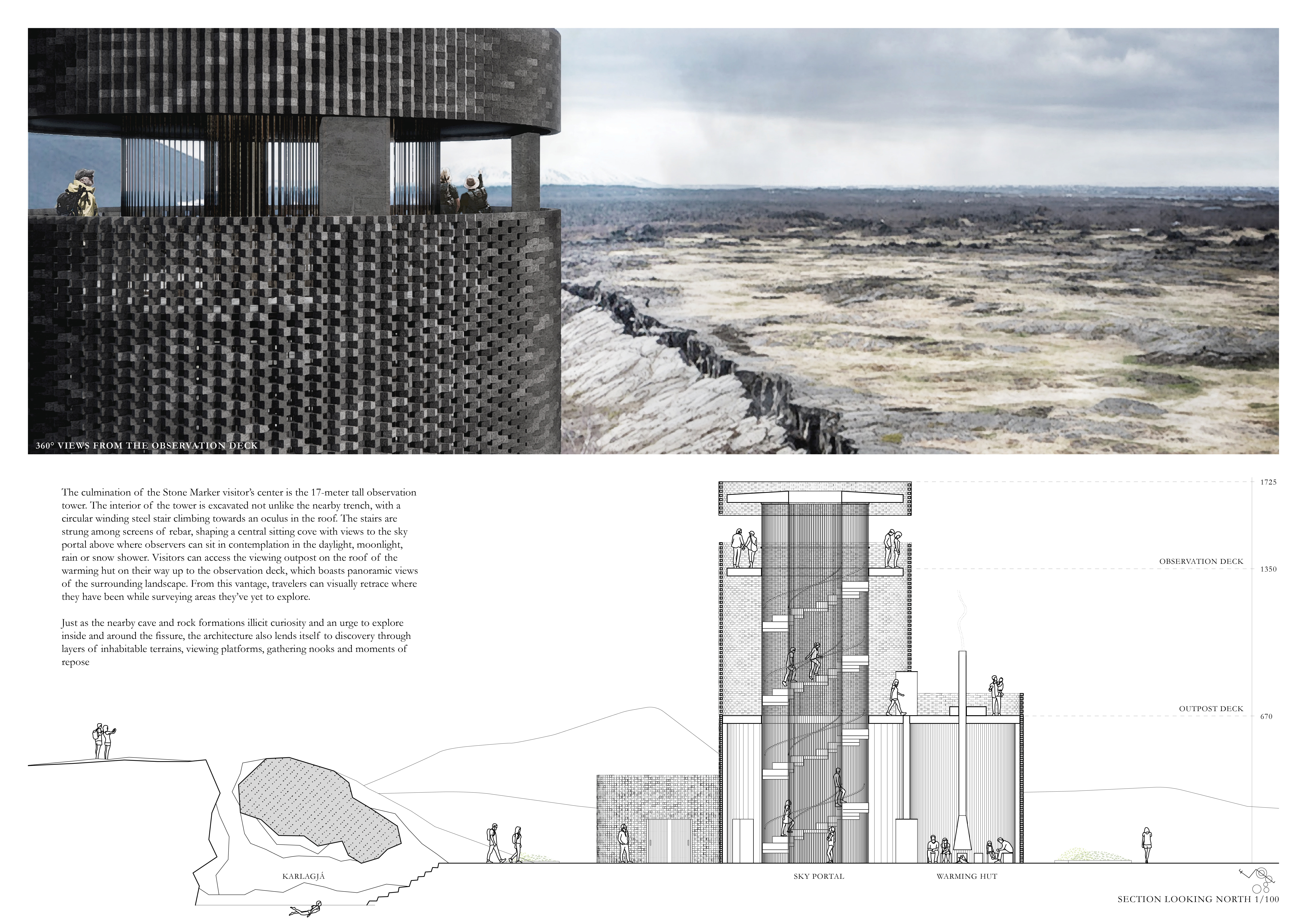5 key facts about this project
The Stone Marker Observation Tower and Visitor's Center is situated along the tectonic ridge between the North American and Eurasian plates, offering an educational platform within a landscape rich in geological importance. The design focuses on integrating the buildings with their natural surroundings, creating a space for community engagement and exploration of the unique environment. By using existing pathways, the structure minimizes disruption while enhancing the overall visitor experience.
Architectural Integration
The design features a set of carefully placed nodes along a fissure trail, guiding visitors through the geological wonders of the area. Key components include various pavilions, an outdoor hearth, a storytelling area, and a halo bridge that connects the two tectonic plates. Each element is positioned to allow for natural movement and interaction among visitors, creating spaces for both quiet reflection and social connection.
Visitor Engagement
An observation tower serves as the focal point of the site, complemented by a warming hut where visitors can gather around a central hearth. The canteen opens toward the fissure, enhancing the feeling of connection with the landscape. Facilities such as an office and a map room assist in visitor orientation and education, providing resources that link the physical experience to the geological narrative of the region.
Sustainability Considerations
The project incorporates various passive design techniques and sustainability measures. Buildings are arranged to create natural windbreaks around a central courtyard, while passive daylighting ensures comfortable interiors year-round. An onsite cistern captures rainwater for plumbing, and photovoltaic arrays generate renewable energy for lighting, aligning with approaches aimed at minimizing environmental impact.
Materiality and Interaction
The walls of the structures utilize faceted concrete blocks made with local volcanic aggregates. This choice of material connects the architecture to the regional geology while also providing structural support. The design includes an interactive cairn garden that invites visitors to partake in the Icelandic tradition of stone stacking, enabling them to engage with the landscape in a meaningful way.
The observation tower features a circular winding staircase leading up to a roof oculus, allowing visitors to interact with light and space. As people ascend, they are rewarded with expansive views of the surrounding geology, enhancing their understanding and appreciation of the site.






















































